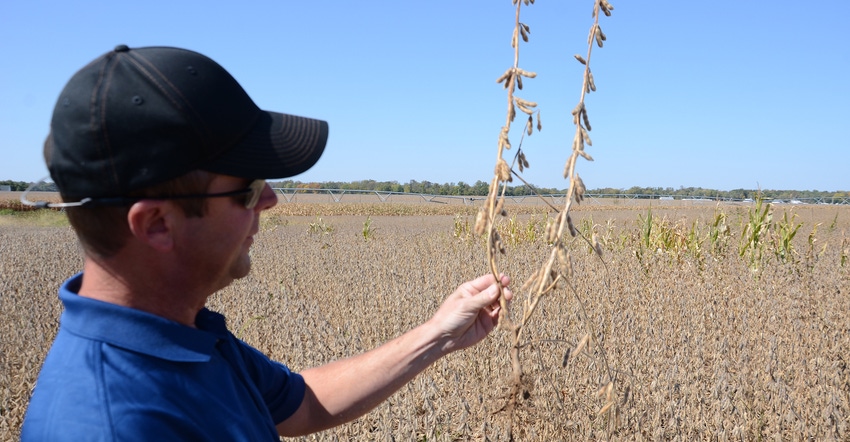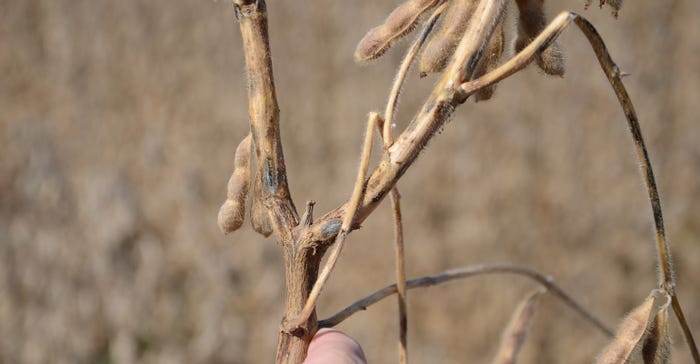
“There are virtually no disease or insect issues to document and see in this field,” Steve Gauck notes, walking the Soybean Watch ’22 field one day before it was harvested. “Normally, I can find something to investigate at this stage of the season, but these beans are virtually free of disease and insect issues across most of the field.”
Gauck, a regional agronomy manager for Beck’s, based near Greensburg, Ind., did find it interesting to look at individual plants, however. Beck’s sponsors Soybean Watch ’22.
Related: Keep stinkbugs away from soybean pods
“There were a couple skip rows where the planter didn’t plant, and I looked at those rows to see if plants compensated for extra space by branching,” Gauck says. “As it turns out, most didn’t branch, even with the extra space. It may have been a function of being planted in early June instead of earlier in the season.”
One plant’s story
Gauck found a plant in another part of the field that did branch. However, on closer examination, it appeared that the plant didn’t branch just because it had extra room and was seeking to add more pods.
“Once I pulled it up and looked at it, it was obvious what happened,” he explains. “In the center between the two branches, at the spot which would have been on the main stem early in the season when the plant was small, there was some dead tissue.
“When a plant is injured, it attempts to compensate by sending out new buds. That appears to be what happened in this case. The plant was injured, and the main stem could no longer extend. So, it formed buds and sent out two branches in opposite directions, forming a plant with two distinct branches. Each branch held a considerable number of pods.”

What caused the injury is unknown, although there are several possible explanations, Gauck says. A small hailstone could cause that type of injury, and there was indication of a small hailstorm affecting plants during the vegetative stage.
Injury from a sprayer tire could also cause injury. The field was sprayed with herbicides during the vegetative stage and was sprayed again for fungicides during the R3 stage.
Power to regrow
“This damage likely occurred fairly early,” Gauck says. “I didn’t see other plants like it, so it wasn’t a major deal.
“However, it indicates what power soybeans have to compensate in various situations. If the main stem isn’t completely destroyed, there is the possibility that it can regrow. That is apparently what happened with this plant.”
Unfortunately, other plants besides soybeans also can send out new buds and shoots and regrow. That’s why plants like waterhemp that aren’t completely killed by a spray application are still a problem, Gauck notes. They can regrow and often still produce seed before a freeze ends the growing season.
About the Author(s)
You May Also Like




